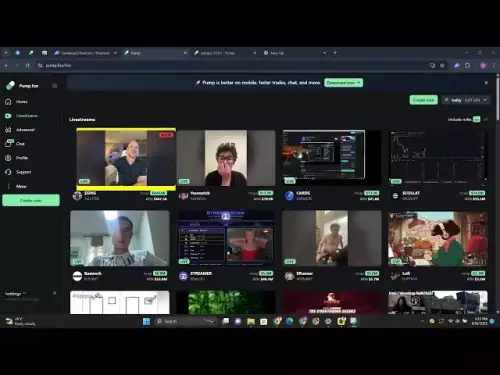 |
|
 |
|
 |
|
 |
|
 |
|
 |
|
 |
|
 |
|
 |
|
 |
|
 |
|
 |
|
 |
|
 |
|
 |
|
Cryptocurrency News Articles
MultiVM, RWAs, and Native EVM: The Future is Now
Sep 17, 2025 at 07:59 pm
Explore the convergence of MultiVM, RWAs, and native EVM, highlighting MANTRA's innovative approach to bridging traditional finance with blockchain technology.

The buzz around MultiVM, Real World Assets (RWAs), and native EVM is reaching fever pitch. Layer-1 blockchains are evolving, and the integration of these technologies is paving the way for a new era of finance. Let's dive into the latest developments and what they mean for the future.
MANTRA Leads the Charge with MultiVM and Native EVM Support
MANTRA, a Layer-1 blockchain designed specifically for RWAs, recently announced a major upgrade: it's now the first blockchain to natively support both EVM and CosmWasm smart contracts. This MultiVM approach is a game-changer, offering developers and institutions the flexibility to build using familiar tools while benefiting from the security and scalability of MANTRA Chain.
This isn't just a technical feat; it's a strategic move. By embracing EVM compatibility, MANTRA is meeting developers and institutions where they are, making it easier to bring traditional assets onchain. Coupled with their Virtual Asset Service Provider (VASP) license from Dubai’s VARA, MANTRA is well-positioned to capitalize on the booming tokenization market.
The RWA Market is Exploding
Speaking of booming, the RWA market has officially surpassed $30 billion, hitting a record $30.14 billion. Tokenized treasuries, onchain private credit, and wrapped commodities are all contributing to this growth. Ethereum currently dominates with $9.16 billion in RWA value locked, followed by Zksync Era with $2.4 billion.
Private credit leads the pack with $16.89 billion, while tokenized U.S. treasury funds hold a strong second place at $7.42 billion. The market is diverse and expanding, with significant investments in global bonds, commodities, institutional funds, and onchain stocks.
Why This Matters
The convergence of MultiVM, RWAs, and native EVM is creating a more accessible, transparent, and compliant financial ecosystem. MANTRA's approach of enforcing regulatory requirements at the protocol level, rather than through smart contracts, provides a higher level of confidence for institutions. This means they no longer have to choose between regulatory clarity and EVM accessibility – they can have both.
For developers, this translates to the ability to deploy Solidity-based dApps directly on MANTRA Chain with minimal changes. They can also customize DeFi protocols for RWA applications and seamlessly bridge funds from other EVM chains.
Looking Ahead
Forecasts predict that the RWA market will balloon into trillions by 2030. Heavyweights like McKinsey and BCG estimate the market cap could reach anywhere from $2 trillion to $10 trillion by the end of the decade. As capital continues its digital transformation, RWAs are poised to become the backbone of blockchain finance, bridging traditional finance with onchain innovation.
Final Thoughts
The integration of MultiVM, RWAs, and native EVM is not just a trend; it's a fundamental shift in how finance operates. With companies like MANTRA leading the charge, the future of finance is looking more open, efficient, and accessible than ever before. So buckle up, folks, because the ride is just getting started!
Disclaimer:info@kdj.com
The information provided is not trading advice. kdj.com does not assume any responsibility for any investments made based on the information provided in this article. Cryptocurrencies are highly volatile and it is highly recommended that you invest with caution after thorough research!
If you believe that the content used on this website infringes your copyright, please contact us immediately (info@kdj.com) and we will delete it promptly.






























































